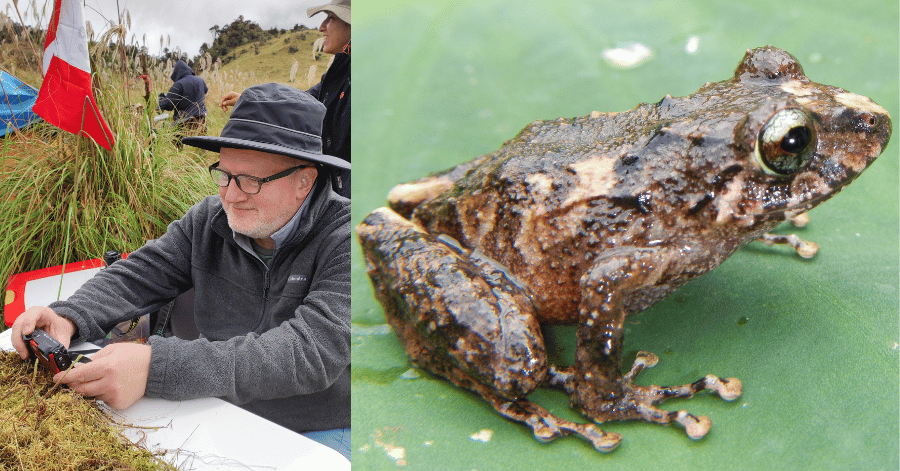 BLOOMINGTON, Ill. — Robert Harrington Professor of Biology Edgar Lehr has added another
discovery to his menagerie of reptiles and amphibians.
BLOOMINGTON, Ill. — Robert Harrington Professor of Biology Edgar Lehr has added another
discovery to his menagerie of reptiles and amphibians.
In 2024, Lehr discovered a new frog species in Peru, which has been named Pristimantis vrazi or Vráz’s Robber Frog. This amphibian joins more than 100 new species discovered by Lehr throughout his 28 years of research in Peru, with the total now at 106 species — equaling nearly 9% of the Peruvian herpetofauna.
Lehr said he enjoys working in remote areas where no other biologist has been before.
“Exploring the unknown is an adventure that never gets boring,” Lehr said.
After receiving a National Geographic Grant to survey the Pui Pui Protected Forest in Peru, and with the assistance of collaborators in Peru and the Czech Republic, Lehr confirmed this new frog species by utilizing DNA.
Andy Wang ‘23 joined Lehr’s team as a student research assistant with a similar love for amphibians.
“I have known Andy since his freshman year,” Lehr said. “His work was an important part of this internal collaboration, which also included researchers from the National Museum of Prague and the Charles University of Prague. After introducing [Wang] to the morphology of frogs of the genus Pristimantis, I gave him a series of unidentified specimens of frogs from the Pui Pui Protected Forest and asked him to sort them based on characteristics, measurements and photographs he took,” Lehr said.
Besides the differences in coloration and skin texture, Lehr found the genetic differences in comparison to other species in the genus were the most significant argument for identifying this frog species as new.
However, this species was more challenging to identify and is considered a "cryptic species," according to Lehr, meaning it resembles a known species, but molecular DNA analysis reveals it is distinct and represents a species that is new to science. Lehr said the “easy” new species are always discovered first while the more difficult animals are identified later.
“My collaborators and I discussed the new name,” Lehr said. “My Czech collaborator and friend for over 20 years, Dr. Jiri Moravec, suggested naming it after the Czech explorer Enrique Stanko Vraz.”
Lehr incorporates his field work into his IWU curriculum by using examples from his research in lectures to tell stories about the discoveries, explaining the methods, difficulties and even mistakes he made during the process.